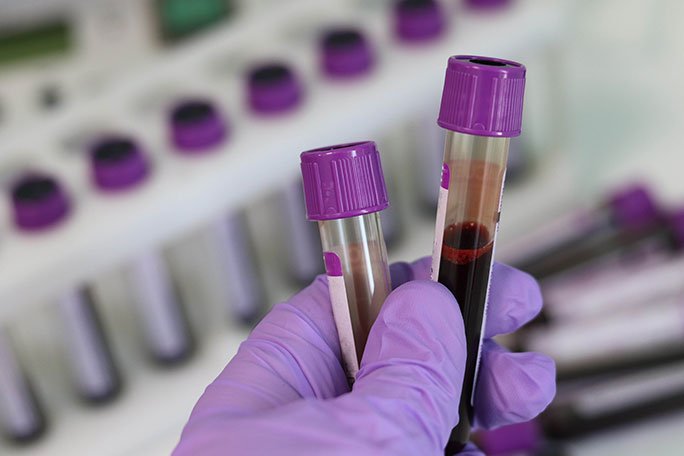Strategies Implemented by US Hospitals to Address Increased Demand for Phlebotomy Services During COVID-19
Summary
- Hospitals in the United States faced increased demand for phlebotomy services during the Covid-19 pandemic.
- To address this demand, hospitals implemented various strategies such as hiring additional staff, expanding operating hours, and utilizing technology.
- These strategies helped hospitals meet the needs of patients and ensure continuity of care during challenging times.
Introduction
The Covid-19 pandemic has placed unprecedented demands on hospitals in the United States. One area that experienced a surge in demand during this time was phlebotomy services. Phlebotomy, which involves drawing blood for testing and transfusion, became essential in diagnosing and monitoring Covid-19 patients. Hospitals had to quickly adapt to this increased demand and implement strategies to ensure that they could meet the needs of patients effectively. In this article, we will explore the strategies that hospitals in the United States implemented to address the increased demand for phlebotomy services during the Covid-19 pandemic.
Hiring Additional Staff
One of the first strategies that hospitals adopted to address the increased demand for phlebotomy services was hiring additional staff. With more patients requiring blood tests for Covid-19 diagnosis and monitoring, hospitals needed more phlebotomists to perform these procedures efficiently. By hiring additional staff, hospitals were able to ensure that patients received timely and accurate blood draws, which were crucial for their care and treatment.
Benefits of Hiring Additional Staff
- Increased capacity to perform phlebotomy procedures
- Shorter wait times for patients
- Ability to meet the demand for blood tests efficiently
Challenges of Hiring Additional Staff
- Finding qualified phlebotomists to fill the positions
- Training new staff members on hospital protocols and procedures
- Managing the increased payroll costs associated with hiring additional staff
Expanding Operating Hours
Another strategy that hospitals implemented to address the increased demand for phlebotomy services was expanding their operating hours. By extending the hours during which phlebotomy services were available, hospitals were able to accommodate more patients and reduce wait times. This helped ensure that patients received the blood tests they needed in a timely manner, leading to better outcomes and higher Patient Satisfaction.
Benefits of Expanding Operating Hours
- Increased accessibility for patients needing phlebotomy services
- Ability to accommodate more patients throughout the day
- Reduced wait times and improved Patient Satisfaction
Challenges of Expanding Operating Hours
- Managing staffing schedules to cover extended hours
- Ensuring that all staff members are properly trained to work during the extended hours
- Dealing with increased operating costs associated with extended hours of operation
Utilizing Technology
In addition to hiring additional staff and expanding operating hours, hospitals also leveraged technology to address the increased demand for phlebotomy services. Telehealth platforms were used to schedule appointments for blood tests, reducing the need for in-person visits and minimizing the risk of exposure to Covid-19. Mobile Phlebotomy services were also introduced, allowing patients to have their blood drawn in the comfort of their own homes. These technological solutions helped hospitals provide more convenient and efficient phlebotomy services to patients during the pandemic.
Benefits of Utilizing Technology
- Increased convenience for patients scheduling blood tests
- Reduced risk of exposure to Covid-19 by minimizing in-person visits
- Ability to reach patients who may have difficulty accessing traditional healthcare facilities
Challenges of Utilizing Technology
- Ensuring the security and privacy of patient health information transmitted through technology
- Training staff on how to use new technology platforms effectively
- Managing technical issues that may arise when implementing new technological solutions
Conclusion
The Covid-19 pandemic presented hospitals in the United States with numerous challenges, including increased demand for phlebotomy services. To address this demand, hospitals adopted various strategies such as hiring additional staff, expanding operating hours, and utilizing technology. These strategies helped hospitals meet the needs of patients and ensure continuity of care during the challenging times brought about by the pandemic. By implementing these strategies effectively, hospitals were able to navigate the increased demand for phlebotomy services and provide high-quality care to patients when they needed it most.

Disclaimer: The content provided on this blog is for informational purposes only, reflecting the personal opinions and insights of the author(s) on the topics. The information provided should not be used for diagnosing or treating a health problem or disease, and those seeking personal medical advice should consult with a licensed physician. Always seek the advice of your doctor or other qualified health provider regarding a medical condition. Never disregard professional medical advice or delay in seeking it because of something you have read on this website. If you think you may have a medical emergency, call 911 or go to the nearest emergency room immediately. No physician-patient relationship is created by this web site or its use. No contributors to this web site make any representations, express or implied, with respect to the information provided herein or to its use. While we strive to share accurate and up-to-date information, we cannot guarantee the completeness, reliability, or accuracy of the content. The blog may also include links to external websites and resources for the convenience of our readers. Please note that linking to other sites does not imply endorsement of their content, practices, or services by us. Readers should use their discretion and judgment while exploring any external links and resources mentioned on this blog.

